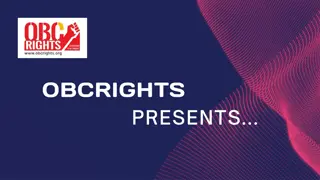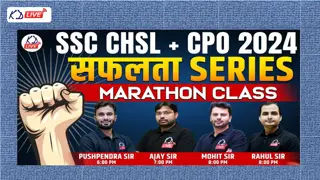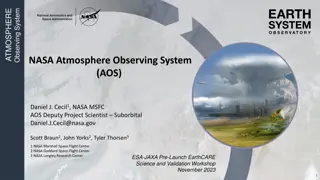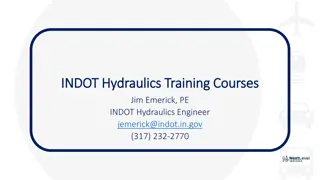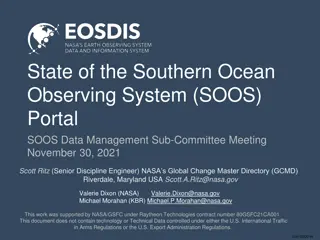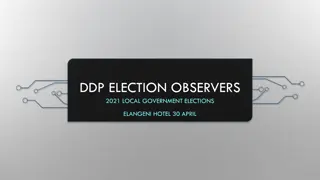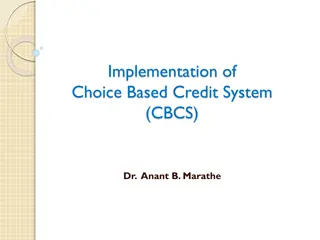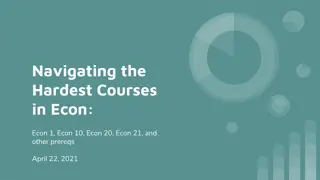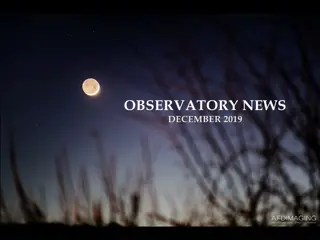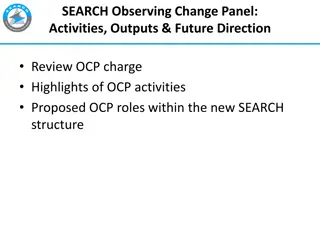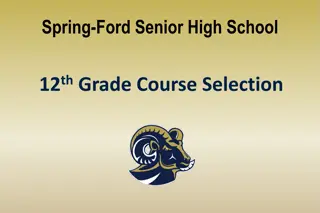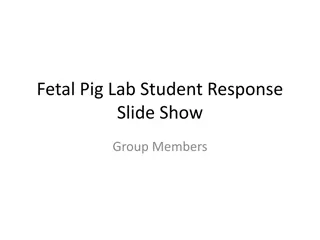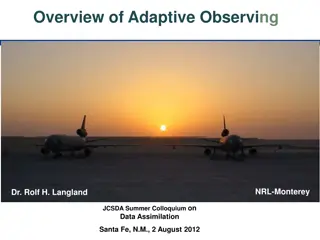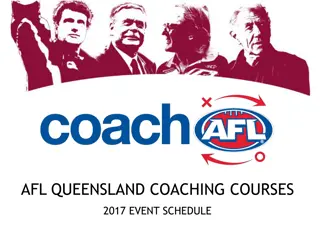Observing Online Courses: Tips and Procedures
Learn how to effectively observe online courses, including procedures for accessing course content, adding observers, and the differences between online and in-person observations. Explore the tools and strategies for evaluating the quality of distance learning courses.
Download Presentation

Please find below an Image/Link to download the presentation.
The content on the website is provided AS IS for your information and personal use only. It may not be sold, licensed, or shared on other websites without obtaining consent from the author. Download presentation by click this link. If you encounter any issues during the download, it is possible that the publisher has removed the file from their server.
E N D
Presentation Transcript
Department Chair Observation of Distance Learning Courses
A New Environment You likely have experience observing faculty in a classroom. How do you observe an online course?
What Well Look at Today When observing, what should you look for? Quick tour of an especially well designed Blackboard course. Course evaluation rubrics used in Distance Ed: Quality Matters Internal YSU reviews
Getting In To see the course, the instructor needs to add you. There are various roles. Course Builder is good for this purpose: Allows you to see all content, even if not currently available to the student. You could be added as Instructor ... but then students would see you listed as an instructor for the class. Procedure for this may be worth discussing in your department.
Getting In How do you get added to a course? Instructors do the following in Blackboard
Getting In Your username: YSU email address minus the @ysu.edu wswann@ysu.edu (email) translates to wswann (Blackboard ID)
Getting In Once you ve been added Log in to Blackboard: ysu.blackboard.com
Course Tour Dr. Rebecca Curnalia, CMST 2600: Communication Theory. Another course tour: Dr. Stephanie Smith, ART 1541: Survey of Art History 1. Linked from our Distance Education web page: web.ysu.edu/de Button: What s it like to take an Online Class? Interactive tour.
Whats it Like to Observe a DE Course? You re coming into an online environment. Difference between this and observing in person: Visiting a classroom, you see a limited piece of a course (one day, or maybe a few). Online, you see most of it. Everything except for whatever discussions or interactions haven t happened yet.
This Means Observing online, you can t look at everything. There s too much. Look at a little content, some discussion, a couple assignments, etc. It s like you re taking a sample of the course. One strategy: Sample a bit one day ... then come back the next.
What are You Looking For? Broadly speaking: 1. Content items (convey the information): Some variety: Readings Web resources Audio or video lectures Powerpoints Video demonstrations Some classes (Econ, Stats, and Business) do video demos of case studies in an Excel spreadsheet.
What are You Looking For? Broadly speaking: 1. Content items (convey the information): Some variety. Quality: Materials are substantive, have merit. You know your discipline: What are the excellent materials? Are we channeling students towards them?
What are You Looking For? Broadly speaking: 1. Content items (convey the information): Some variety. Quality. Quantity: Is it a full course? Are they getting exposure to a substantial set of information? (corresponds with credit hours for the class)
A Closer Look at Variety Broadly speaking: 1. Content items (convey the information): Some variety. Quality. Quantity.
A Closer Look at Variety Broadly speaking: 1. Content items (convey the information): Some variety: Some courses have narrower range of types of material, some broader. Not always bad. Example: Communications Use a broad range of media. Bread-and-butter of communications discipline. Example: English A discipline focused on reading and writing.
A Closer Look at Variety So, on one hand, we never want to limit the range: We have English classes use a lot of multimedia. Can be a terrific enhancement to courses in any field. But we don t want to require really broad range for the more focused disciplines.
What are You Looking For? Broadly speaking: 1. Content items. 2. Interactive items: We want to interact a lot. Give the course a lively, active feel, with a sense of personal connection. Can be used to teach as well as to assess.
What are You Looking For? Broadly speaking: 1. Content items. 2. Interactive items: Frequency of use. Some variety: Discussions Quizzes Essays Papers Tests Student presentations Group work Synchronous interaction? (video IM, Skype, Google Hangouts, Oovoo)
What are You Looking For? Broadly speaking: 1. Content items. 2. Interactive items. 3. Clarity: Structure is clear and consistent: Sometimes content is strewn around course. Not consistently laid out. Content is clearly written, spoken, or displayed: Written items clear, use good grammar. Quality recordings of audio and/or video.
What are You Looking For? Broadly speaking: 1. Content items. 2. Interactive items. 3. Clarity. 4. Learning Objectives & Alignment: Important for instructor to define goals of class. Can have objectives at course level and module level. Course level required. Alignment: The rest of the class (content, assignments) geared towards meeting those objectives.
Alignment Closer Look From the broadest perspective: What you re aiming for should line up with your content, assignments, and assessment. You might be aiming for lower levels of knowledge (factual information, comprehension).
Alignment Closer Look From the broadest perspective: What you re aiming for should lime up with your content, assignments, and assessment. You might be aiming for lower levels of knowledge (factual information, comprehension). You might be aiming for higher levels of knowledge (application of concepts, analysis, synthesis).
Alignment Closer Look From the broadest perspective: What you re aiming for should line up with your content, assignments, and assessment. You might be aiming for lower levels of knowledge (factual information, comprehension): Readings Lectures Quizzes Exams
Alignment Closer Look From the broadest perspective: What you re aiming for should lime up with your content, assignments, and assessment. You might be aiming for lower levels of knowledge (factual information, comprehension). You might be aiming for higher levels of knowledge (application of concepts, analysis, synthesis): Discussions Case Studies Essays Student Presentations
What are You Looking For? Those are four main things: 1. Content items. 2. Interactive items. 3. Clarity. 4. Learning Objectives & Alignment. You have a handout listing these items.
How DE Courses are Evaluated An aside, before we talk about formalrubrics Our office does a lot of informal reviews of courses: Work with faculty on design and development. You, and folks in your department, are encouraged to take advantage of this. Call me (Bill) at x-1535.
Course Evaluation Rubrics We also do formal course reviews/evaluations. Qualifies faculty for development compensation tied to DE courses. Can use either of two processes: Quality Matters: Set of standards broadly used in academia. Internal eYSU Development Review: We created this. Launched in Fall, 2013. 35 courses have been reviewed & approved, 9 in process.
Course Evaluation Rubrics Each process has a rubric: Quality Matters. eYSU Development Review.
Course Evaluation Rubrics Your observations don t need to go into the depth of these formal DE reviews. But you ll hear about course reviews. You may wonder how the four things to look for we ve talked about today relate to formal review rubrics. We ll take a quick peek at the rubrics ... ...
Course Evaluation Rubrics The fundamentals that we ve talked about ... 1. Content 2. Interactivity 3. Clarity 4. Learning Objectives/Alignment ... are covered in both formal rubrics.
Course Evaluation Rubrics Also covered: Course introduction & overview (required by QM). Segmenting (recommended in eYSU): Breaking up content into easily digestible chunks. Sequencing (both): If you cover lower-level skills and higher-level skills, and the lower skills are needed for the higher, you do lower first.
Course Evaluation Rubrics Also covered: Course introduction & overview (required by QM). Segmenting (recommended in eYSU). Sequencing (both). Learner support information (both): Tell them assignment deadlines. Explain your grading standards/procedures. Help Desk contact information. Information on requesting disability accommodations.
Questions Questions? Thoughts? Concerns?
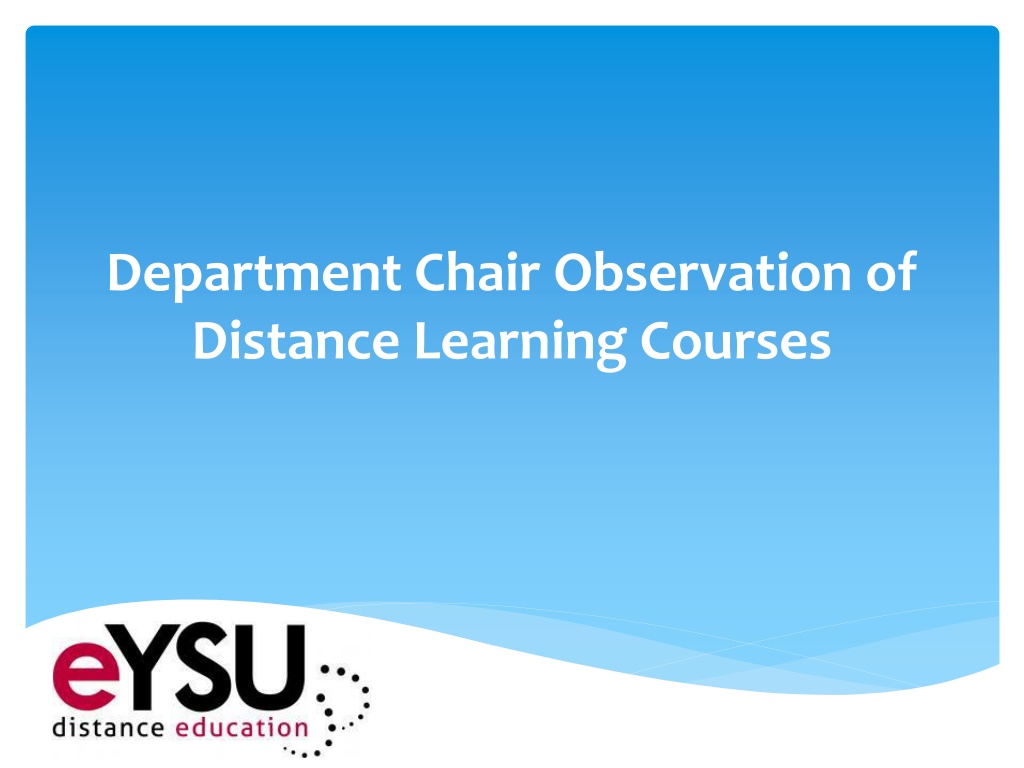


![[PDF⚡READ❤ONLINE] Solar Surveyors: Observing the Sun from Space (Springer Praxis](/thumb/21536/pdf-read-online-solar-surveyors-observing-the-sun-from-space-springer-praxis.jpg)
